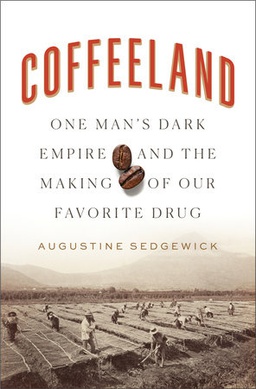Coffeeland
Coffeeland refers to regions around the world that are renowned for their coffee production. These areas are primarily located in the tropical belt between the Tropic of Cancer and the Tropic of Capricorn, where the climate and soil conditions are most favorable for coffee cultivation. The concept of Coffeeland is not just about the geographical locations but also encompasses the culture, economy, and social structures that have developed around coffee production.
History[edit | edit source]
The history of coffee cultivation dates back to the 15th century, with its origins in Ethiopia. From there, it spread to the Arabian Peninsula, where it became an integral part of the culture. By the 17th century, coffee had made its way to Europe and became a popular beverage. The European colonial powers began to establish coffee plantations in their tropical colonies, which led to the expansion of Coffeeland to regions such as Latin America, Southeast Asia, and Africa.
Major Coffee Producing Regions[edit | edit source]
Latin America[edit | edit source]
Latin America is home to some of the most significant coffee-producing countries in the world, including Brazil, Colombia, and Guatemala. Brazil is the largest coffee producer globally, known for its vast plantations that primarily produce Arabica beans. Colombia, with its rich volcanic soil and ideal climate, is renowned for its high-quality coffee. Guatemala, on the other hand, offers a wide variety of coffee types due to its diverse climates and landscapes.
Africa[edit | edit source]
Africa, particularly the eastern part, has a long history of coffee cultivation. Ethiopia, known as the birthplace of coffee, produces coffees with unique fruity and floral flavors. Kenya is another major coffee producer, known for its acidic and full-bodied coffee.
Southeast Asia[edit | edit source]
Southeast Asia, especially Vietnam, Indonesia, and Thailand, has become an important region in the global coffee industry. Vietnam is the second-largest coffee producer worldwide, primarily of Robusta beans, which are known for their strong flavor and higher caffeine content. Indonesia is famous for its unique processing methods, such as the wet-hulling method used in Sumatra.
Cultural and Economic Impact[edit | edit source]
Coffee cultivation and trade have significantly impacted the economies and cultures of Coffeeland regions. For many countries, coffee is a major export commodity that supports millions of livelihoods. The coffee culture in these regions is also rich and varied, with unique traditions and practices surrounding coffee production and consumption.
Challenges[edit | edit source]
Despite its economic importance, coffee production faces several challenges, including climate change, pests and diseases, and fluctuating market prices. These challenges have significant implications for the sustainability of coffee production and the livelihoods of coffee farmers.
Sustainability and Ethical Practices[edit | edit source]
In response to these challenges, there has been a growing movement towards sustainable and ethical coffee production practices. This includes initiatives such as fair trade, organic farming, and shade-grown coffee, which aim to improve environmental sustainability and the well-being of coffee farmers.
Search WikiMD
Ad.Tired of being Overweight? Try W8MD's NYC physician weight loss.
Semaglutide (Ozempic / Wegovy and Tirzepatide (Mounjaro / Zepbound) available. Call 718 946 5500.
Advertise on WikiMD
|
WikiMD's Wellness Encyclopedia |
| Let Food Be Thy Medicine Medicine Thy Food - Hippocrates |
Translate this page: - East Asian
中文,
日本,
한국어,
South Asian
हिन्दी,
தமிழ்,
తెలుగు,
Urdu,
ಕನ್ನಡ,
Southeast Asian
Indonesian,
Vietnamese,
Thai,
မြန်မာဘာသာ,
বাংলা
European
español,
Deutsch,
français,
Greek,
português do Brasil,
polski,
română,
русский,
Nederlands,
norsk,
svenska,
suomi,
Italian
Middle Eastern & African
عربى,
Turkish,
Persian,
Hebrew,
Afrikaans,
isiZulu,
Kiswahili,
Other
Bulgarian,
Hungarian,
Czech,
Swedish,
മലയാളം,
मराठी,
ਪੰਜਾਬੀ,
ગુજરાતી,
Portuguese,
Ukrainian
Medical Disclaimer: WikiMD is not a substitute for professional medical advice. The information on WikiMD is provided as an information resource only, may be incorrect, outdated or misleading, and is not to be used or relied on for any diagnostic or treatment purposes. Please consult your health care provider before making any healthcare decisions or for guidance about a specific medical condition. WikiMD expressly disclaims responsibility, and shall have no liability, for any damages, loss, injury, or liability whatsoever suffered as a result of your reliance on the information contained in this site. By visiting this site you agree to the foregoing terms and conditions, which may from time to time be changed or supplemented by WikiMD. If you do not agree to the foregoing terms and conditions, you should not enter or use this site. See full disclaimer.
Credits:Most images are courtesy of Wikimedia commons, and templates, categories Wikipedia, licensed under CC BY SA or similar.
Contributors: Prab R. Tumpati, MD

